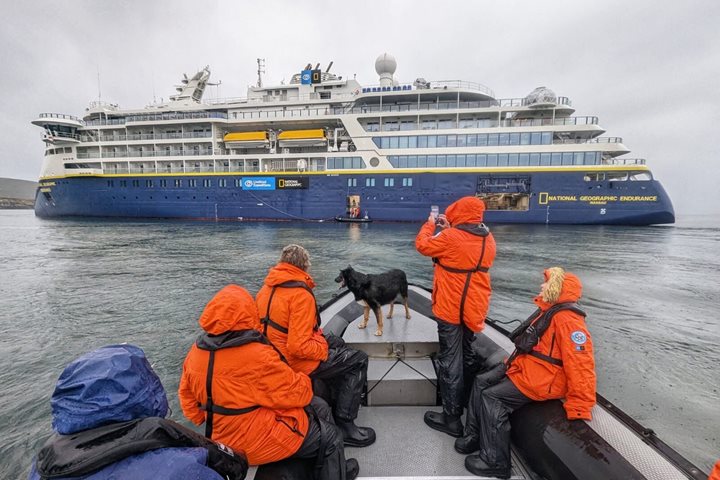Despite a windy start, the National Geographic Explorer set anchor off the east coast of Half Moon Island this morning. In the shadow of Livingston Island, Half Moon Island is part of the South Shetland Archipelago and offered the opportunity for long, medium, and short hikes. Spotting chinstrap penguins and taking in commanding vistas was the order of the day.
>Hikers took to the spine of the island where nesting south polar (also known as Antarctic) skuas made their presence known. So as not to disturb their young, downy chicks, we kept our distance and continued downslope along cobbled beaches lined with fur seals, and culminated at a chinstrap rookery nestled amongst dramatically metamorphosed rock outcroppings. Our first chinstraps of the voyage.
From Half Moon Island, we motored towards Maxwell Bay, a protected anchorage on King George Island known for its high density of research stations: China, Chile, Russia, Uruguay, and South Korea are just a few of the nations represented in this part of the South Shetlands. Since King George Island is the closest point of land to the southern tip of South America, it makes it a convenient access point for vessel and aircraft alike. During our afternoon in the bay, a Chilean C1-30 airplane boomed in for a landing over the small cluster of buildings that make up the neighboring Frei and Bellingshausen stations (Chilean and Russian respectively). Likely on a provisioning trip, the C1-30 is certainly a rare sight in this remote corner of the world. This will be the last sign of civilization for the next few days as we continue east towards South Georgia in the days ahead.







